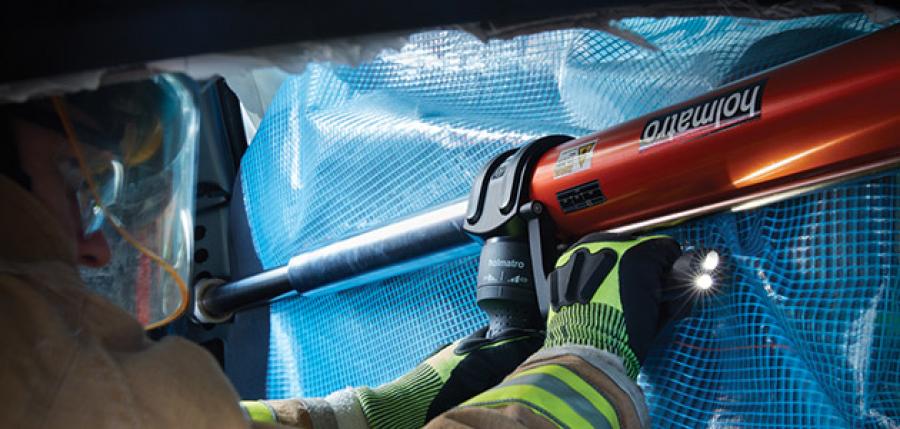Cross Ramming
In my last blog I discussed two key medical issues facing rescuers on scene; the need to preserve breath and blood. In the very worst of impacts, where damage is severe, getting access to your patient and in particular, getting access to their airway or bleeding sites may be compromised by their position within the vehicle and the damage to the passenger cell. It therefore remains that in the case where a trapped victim has a compromised airway or a major bleed, having the ability to quickly gain access and create space is imperative. Without this space, you or a medic simply cannot easily and effectively perform the necessary life saving interventions.
Cross ramming
We should always prepare ourselves for incidents of this nature and have an effective plan in place. Removing a door is, for most crews, a fairly standard skill and will, in most cases give you adequate access. But what about the less practiced and more complex evolutions such as cross ramming?
Rams are the least favoured of all hydraulic rescue tools. They are seldom discussed and always the last to be picked up during a practical session. So if we seldom use or talk about the ram, what does that say about our expertise with it? Well, my experience tells me that when I teach cross ramming, it is always well received because it is often the first time rescuers have had the opportunity to practice it. I wouldn’t say we lack skill when it comes to cross ramming but we do lack confidence. Cross ramming is used when there is severe impact damage to a vehicle and it allows us to return the vehicle as close to its pre-collision shape as possible, whilst at the same time creating space around your patient.

Considerations when practising cross ramming
So what should we remember when it comes to cross ramming training?
- Well, firstly do your best to try and get damaged cars. Try and get vehicles that are damaged in more than one area as a single side impact will only yield one cross ramming session. I suggest crushing the roof down as well as side impact damage. This allows you to practice cross ramming in the horizontal and vertical plane.
- Next, consider having the car in different orientations. It provides additional challenges and considerations. I always teach rescuers before they use cribbing as a base for cross ramming, try the seat. It very often gets strange looks but In 99% of cases once the ram has depressed the seat cushion it will rest on the solid base of the seat and provide an adequate point from which to cross ram. In a time critical situation this can save valuable time when you need to create space to e.g. access a patient’s airway.
- Perhaps the most important consideration when cross ramming (or using any other hydraulic tools) is to understand the principle of hydraulic forces and the design and strength of the vehicle. You are trying to relocate the car’s construction and therefore need to consider the concept of relative strength. That is to say that the base of your ram must be cited on a point that is relatively stronger than the area you are trying to move. Fail to do this and the construction at the base of your ram will move instead.
- New car construction dictates that you must get your ram position correct first time, especially when working in the immediate vicinity of your patient. Repositioning an incorrectly placed ram once the cross ramming has started may not be possible, as the construction may ‘spring back’ and re-trap your patient.
Cross ramming performed with Holmatro's longest telescopic ram, which is equipped with a laser pointer for first-time-right positioning:
Conclusion
With today's modern vehicle construction we see less passenger cell intrusion than we did a decade ago, but it still happens and we must be prepared and in a position to rapidly gain access to our patient in order to carry out immediately life saving interventions. We need to be more confident with hydraulic rams and ensure we have the right vehicles with which we can hone our skills. Time critical injuries are so called for a reason and the time you have is not yours, it is your patient’s. With that in mind you have to make every single second count.
As always, I welcome you feedback.
Ian Dunbar